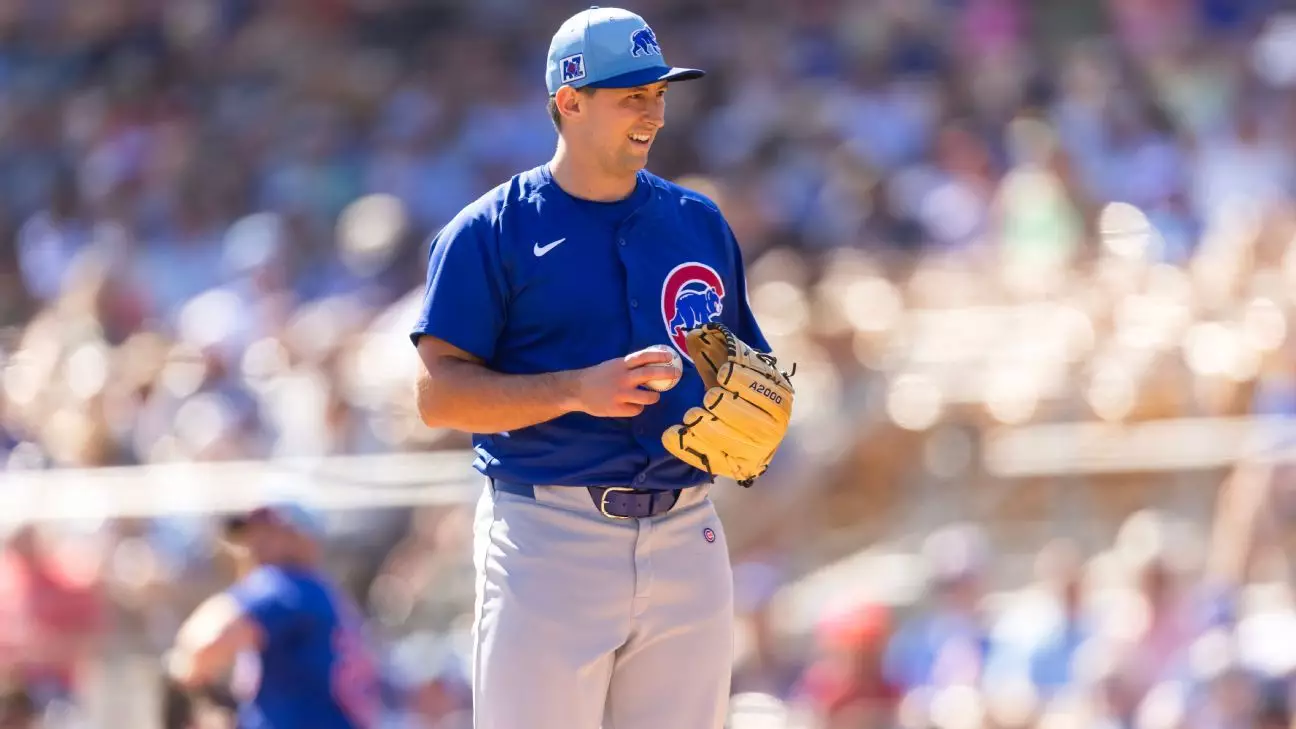In a moment that could redefine how baseball is played, Chicago Cubs pitcher Cody Poteet made history during the team’s opening spring training game against the Los Angeles Dodgers. As the very first player to invoke a challenge on a ball/strike call, Poteet’s decision to request a review for a fastball in the first inning signals a shift towards more interactive and technology-driven measures in Major League Baseball (MLB). This incident opens a dialogue about the intersections of tradition and modern technology within the sport, illuminating the ways in which the game may evolve in the coming seasons.
The pitch in question—a low fastball thrown to Dodgers‘ infielder Max Muncy—was initially ruled a ball by umpire Tony Randazzo. Unperturbed by the call, Poteet quickly activated the review system, tapping his head as a signal to indicate his desire for a review. What followed was a moment of anticipation as the pitch and its location were displayed on the stadium’s scoreboard—thereby overturning the call, bringing Muncy to an 0-2 count before ultimately striking out. This change not only reflects Poteet’s confidence in his throw but also serves as a testament to the evolving dynamics of officiating in baseball.
Muncy, reflecting post-game, acknowledged the gathering attention around the event, stating, “I was pretty positive it was a strike and the umpire balled it.” His sentiments add a layer of complexity to the discussion on the review system, hinting at the mixed feelings players may have when it comes to relying on technology in such nuanced situations. Muncy’s keen sense of the game demonstrates that even players themselves recognize the fine line between human judgment and mechanical efficiency, and the potential for a challenge system to reshape their experiences on the diamond.
The challenge system being tested during spring training is a novel blend of human and digital interaction as teams can contest two calls per game, retaining the right to challenge again if successful. Historical data from minor league games, where the system has been in operation for several years, shows a 50% overturn rate on challenged calls. This particular statistic invites fans and analysts alike to ponder whether the same rates will hold in the major leagues, considering the heightened stakes of regular-season play. While spring training games typically see fewer total challenges—averaging four in the minors—Poteet’s successful appeal indicates an eagerness among players to leverage the available technology during gameplay.
While the MLB has confirmed that the challenge system will not be implemented in the regular season or postseason this year, there is speculation that its introduction could come as early as 2026. Muncy hinted at the potential for such a system to succeed in professional baseball if players can discern that every challenge must be executed with a sense of absolute certainty. This is a salient point—if players feel confidence in the system, they may be more inclined to embrace this shift.
As baseball enthusiasts and experts review the outcomes from the current spring training experiments, MLB’s intent to gather feedback from players and coaches could be pivotal in shaping the future of the sport. Five stadiums in Arizona and eight in Florida are equipped to test this challenge technology, covering about 60% of the games in the Cactus and Grapefruit leagues.
Cody Poteet’s challenge marked more than just a single moment in a game; it symbolizes a landmark shift in how baseball is officiated, where tradition meets technology head-on. As the Cubs triumphed over the Dodgers 12-4, there was more than just a celebration of victory in the air; it was a herald of changes to come. With increasing attention on these experimental systems, the question lingers: Could this be just the beginning? Fans and players alike will be eagerly watching as the landscape of baseball officiating continues to evolve, poised on the brink of transformation.


Napsat komentář